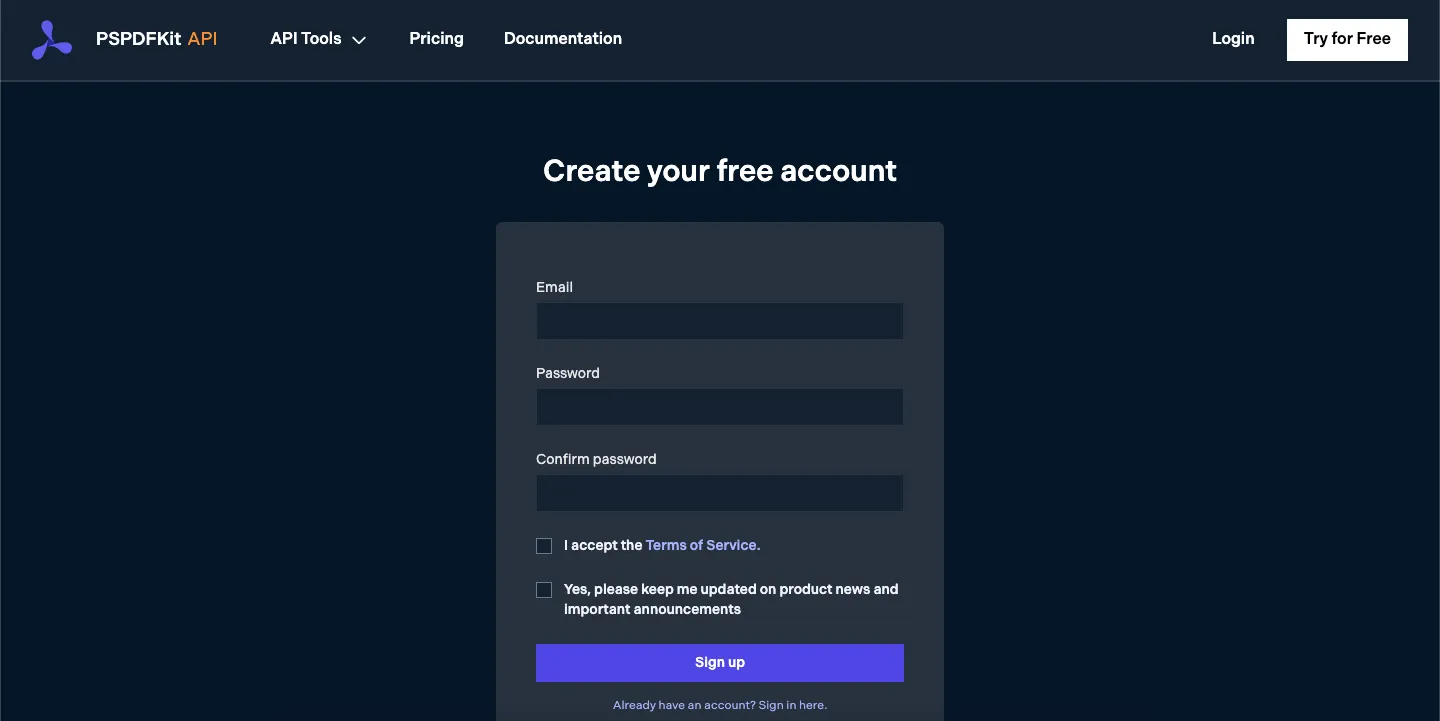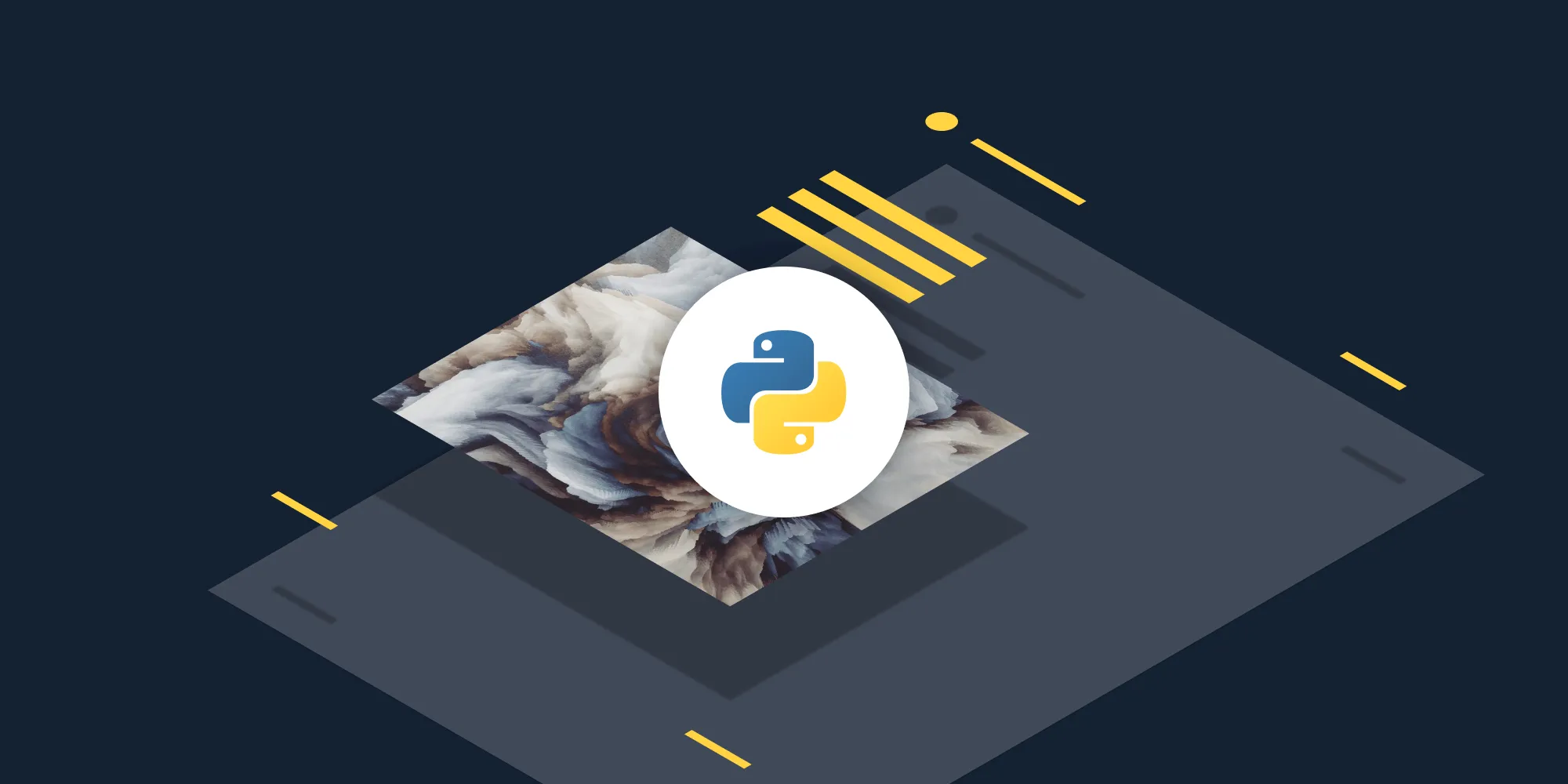How to Convert TIFF Files to PDF Using Python

In this post, you’ll learn how to convert the TIFF file format to PDF using PSPDFKit’s TIFF to PDF Python API(opens in a new tab). With our API, you receive 100 credits with the free plan. Different operations on a document consume different amounts of credits, so the number of PDF documents you can generate may vary. All you need to do is create a free account(opens in a new tab) to get access to your API key.
PSPDFKit API
Converting from TIFF to PDF is just one of our 30+ PDF API tools(opens in a new tab). You can combine our conversion tool with other tools to create complex document processing workflows. You’ll be able to convert various file formats(opens in a new tab) into PDFs and then:
- Merge several resulting PDFs into one
- OCR, watermark, or flatten PDFs
- Remove or duplicate specific PDF pages
Once you create your account, you’ll be able to access all our PDF API tools.
Step 1 — Creating a Free Account on PSPDFKit
Go to our website(opens in a new tab), where you’ll see the page below, prompting you to create your free account.

Once you’ve created your account, you’ll be welcomed by the page below, which shows an overview of your plan details.

As you can see in the bottom-left corner, you’ll start with 100 credits to process, and you’ll be able to access all our PDF API tools.
Step 2 — Obtaining the API Key
After you’ve verified your email, you can get your API key from the dashboard. In the menu on the left, click API Keys. You’ll see the following page, which is an overview of your keys:

Copy the Live API Key, because you’ll need this for the TIFF to PDF API.
Step 3 — Setting Up Folders and Files
Now, create a folder called tiff_to_pdf and open it in a code editor. For this tutorial, you’ll use VS Code as your primary code editor. Next, create two folders inside tiff_to_pdf and name them input_documents and processed_documents.
Next, copy your TIFF file to the input_documents folder. You can use our demo image(opens in a new tab) as an example.
Then, in the root folder, tiff_to_pdf, create a file called processor.py. This is the file where you’ll keep your code.
Your folder structure will look like this:
tiff_to_pdf├── input_documents| └── image.tiff├── processed_documents└── processor.pyStep 4 — Writing the Code
Open the processor.py file and paste the code below into it:
import requestsimport json
instructions = { 'parts': [ { 'file': 'image' } ]}
response = requests.request( 'POST', 'https://api.pspdfkit.com/build', headers = { 'Authorization': 'Bearer YOUR API KEY HERE' }, files = { 'image': open('input_documents/image.tiff', 'rb') }, data = { 'instructions': json.dumps(instructions) }, stream = True)
if response.ok: with open('processed_documents/result.pdf', 'wb') as fd: for chunk in response.iter_content(chunk_size=8096): fd.write(chunk)else: print(response.text) exit()ℹ️ Note: Make sure to replace
YOUR_API_KEY_HEREwith your API key.
Code Explanation
In the code above, you first import the requests and json dependencies. After that, you create the instructions for the API call.
You then use the requests module to make the API call, and once it succeeds, you store the result in the processed_documents folder.
Output
To execute the code, run the command below:
python3 processor.pyOnce the code has been executed, you’ll see a new processed file under the processed_documents folder called result.pdf.
The folder structure will look like this:
tiff_to_pdf├── input_documents| └── document.tiff├── processed_documents| └── result.pdf└── processor.pyFinal Words
In this post, you learned how to seamlessly integrate our TIFF to PDF API into your Python application and programmatically convert TIFF files to PDF documents.
In addition to document conversion, you can integrate multiple API tools into your existing applications. With the same API token, you can perform other operations, such as merging several documents into a single PDF, adding watermarks, and more. To get started with a free trial, sign up(opens in a new tab) here.







